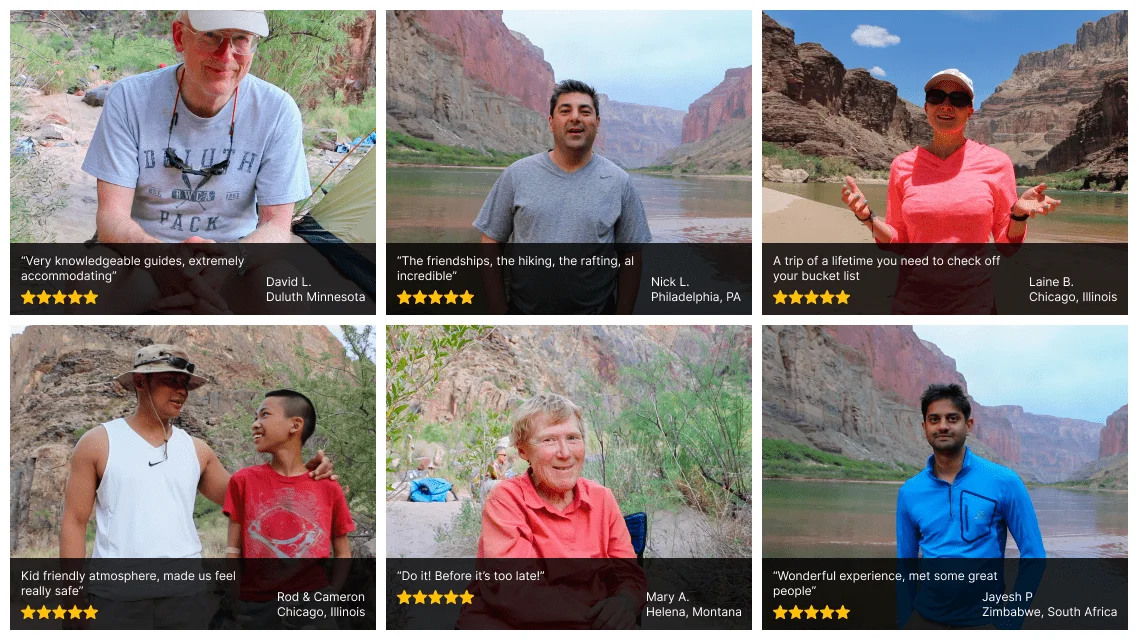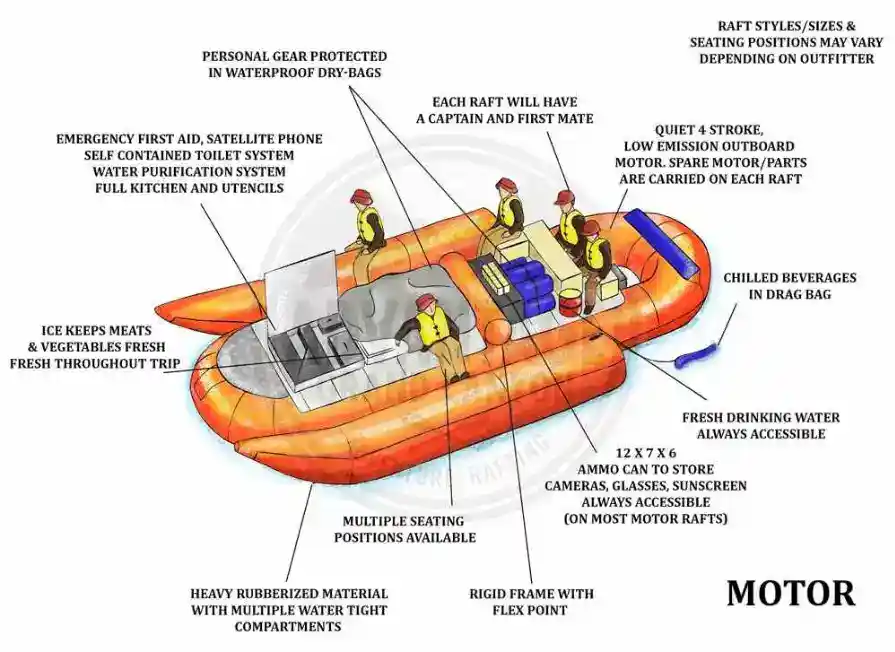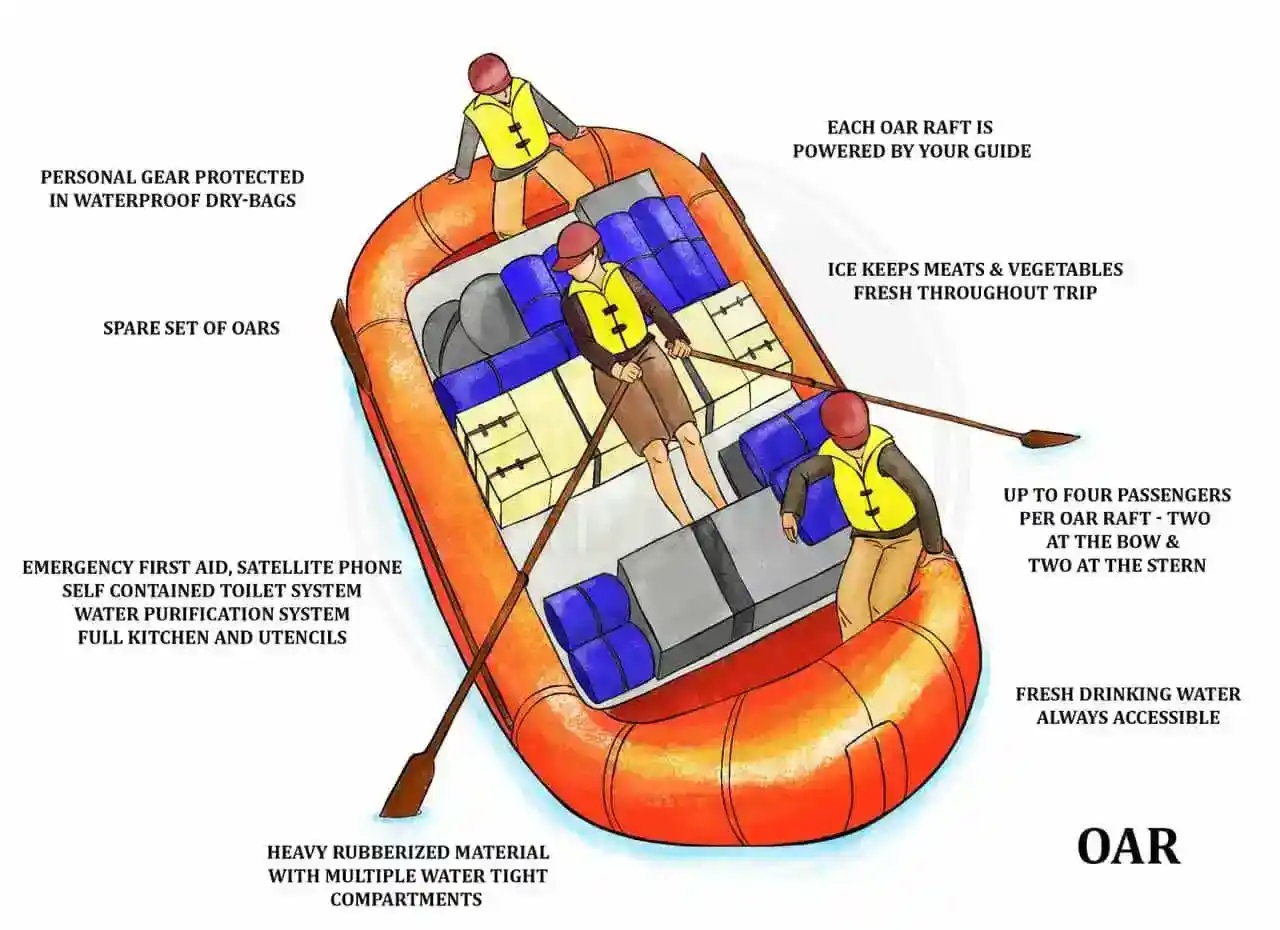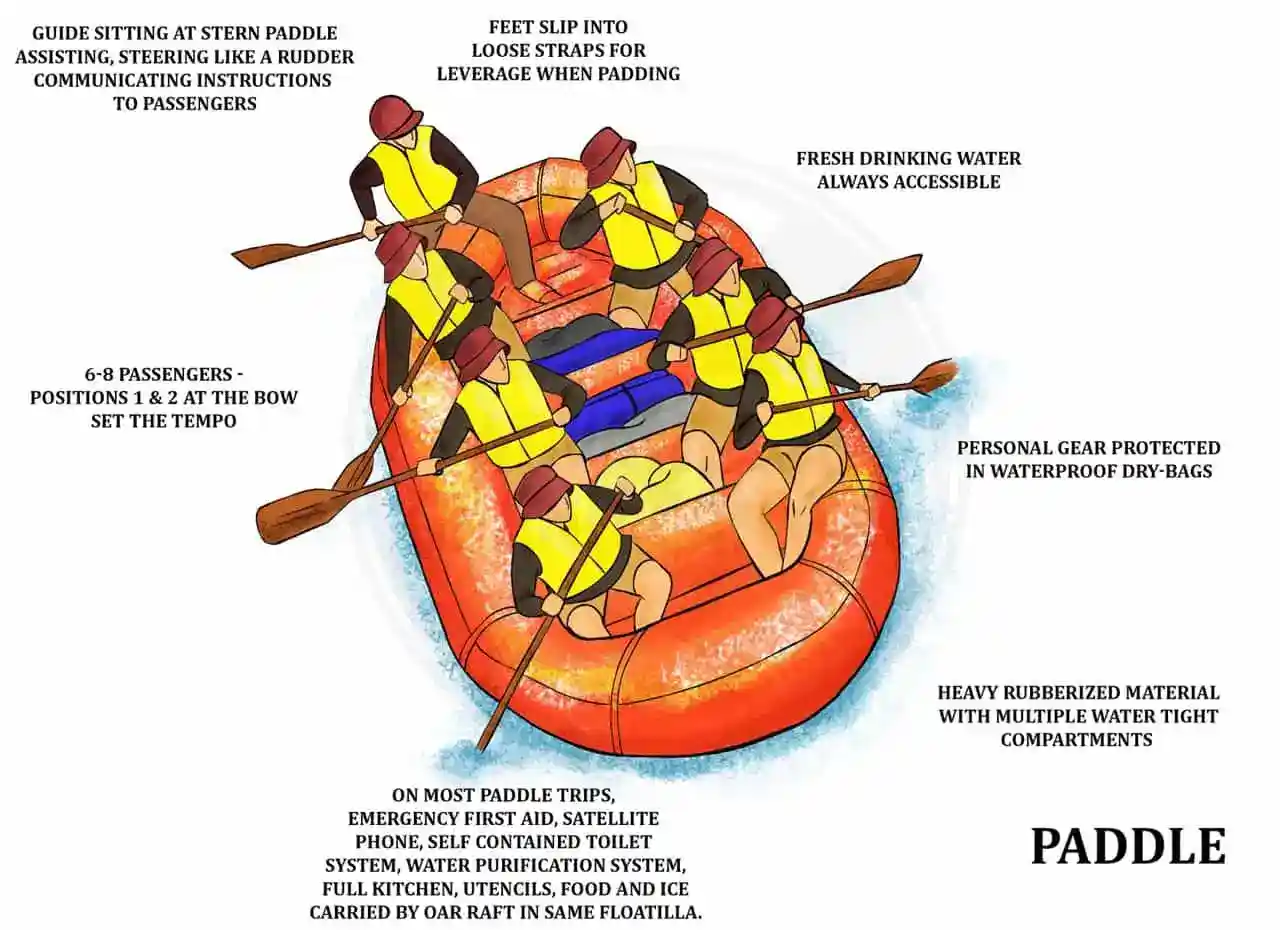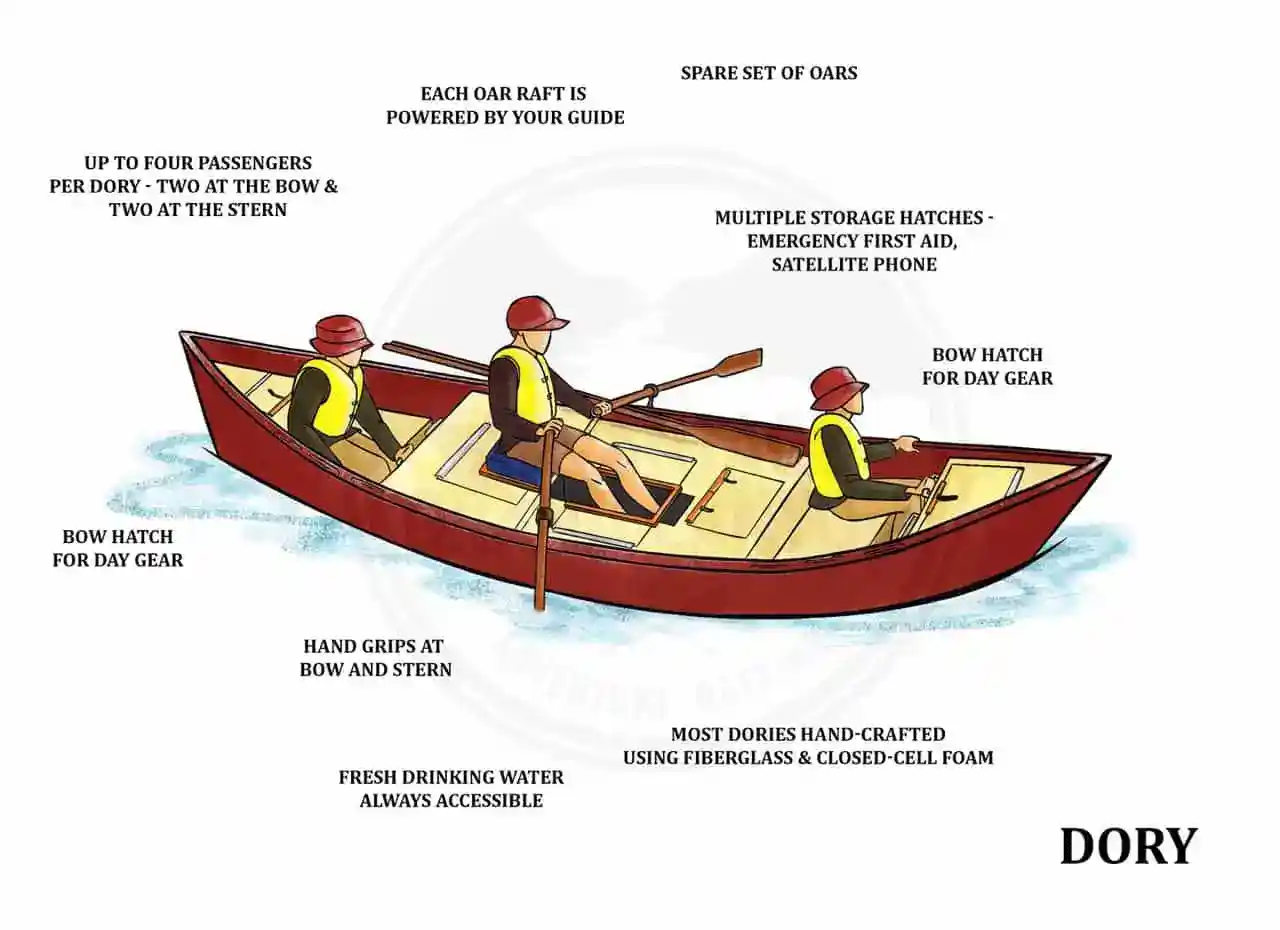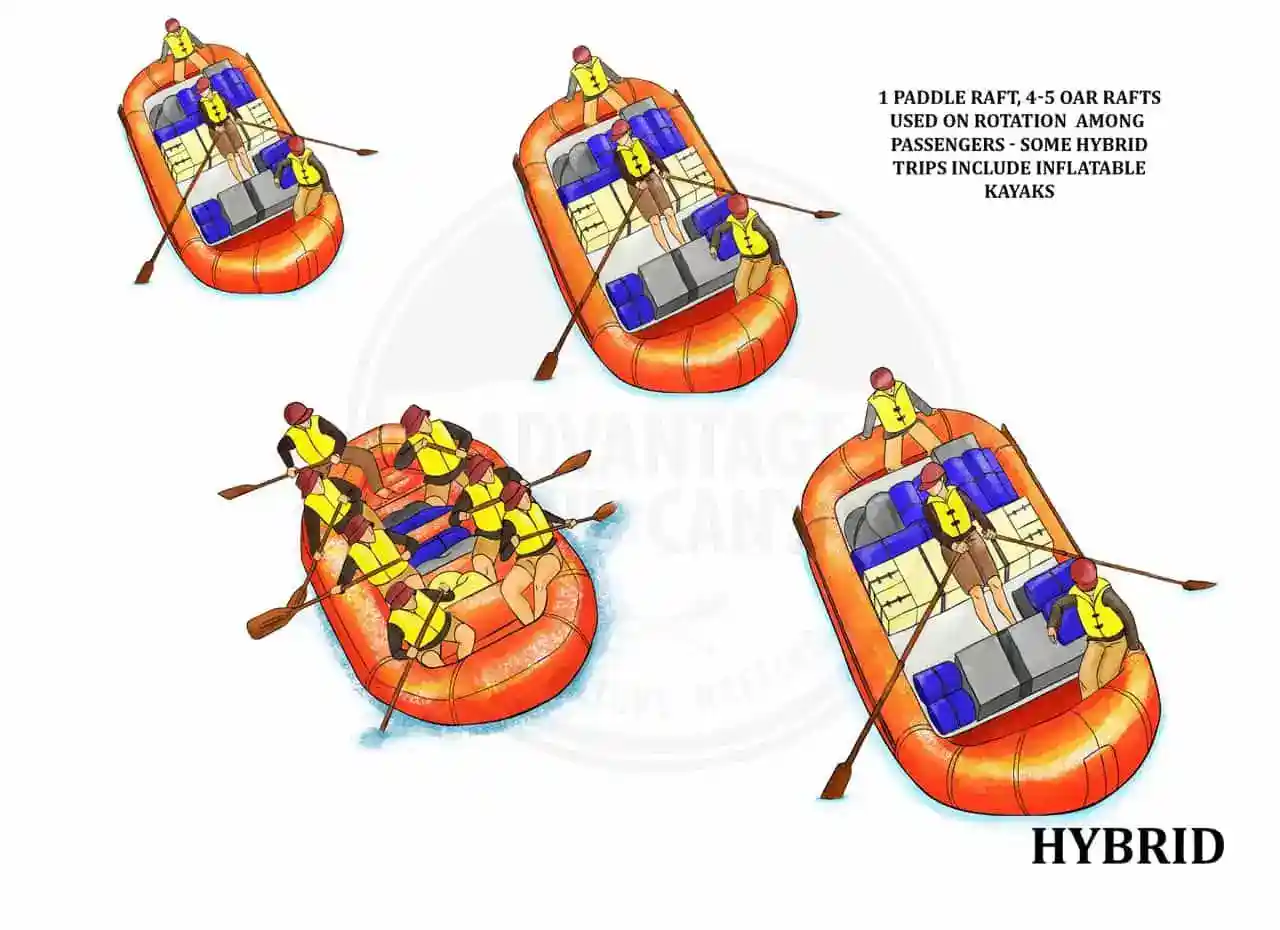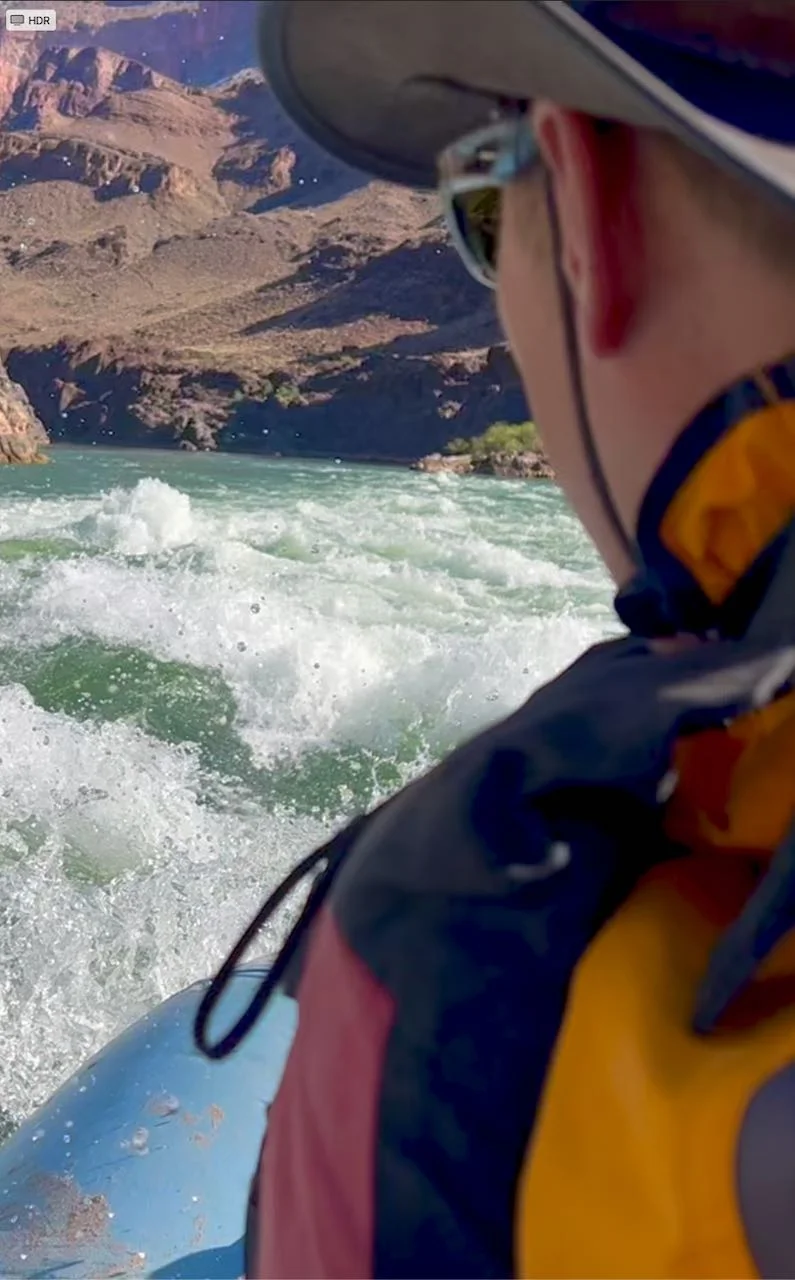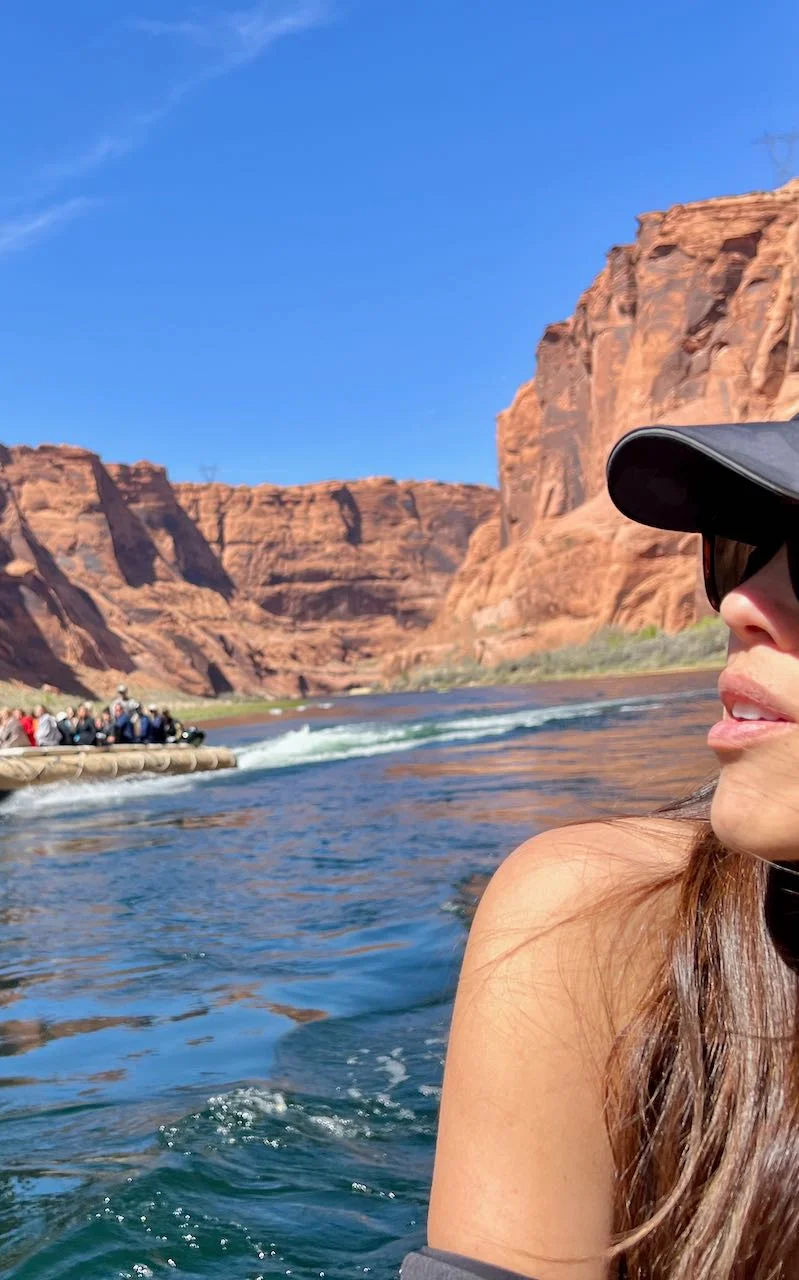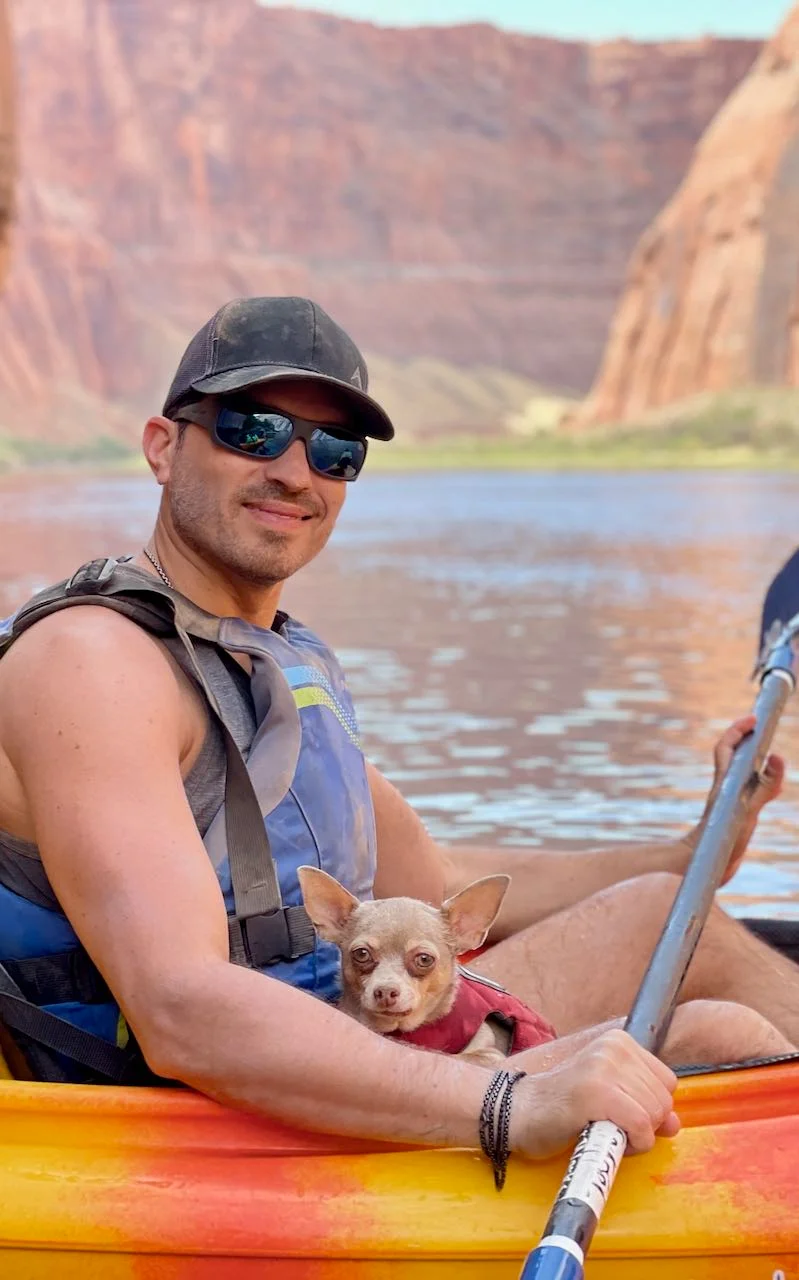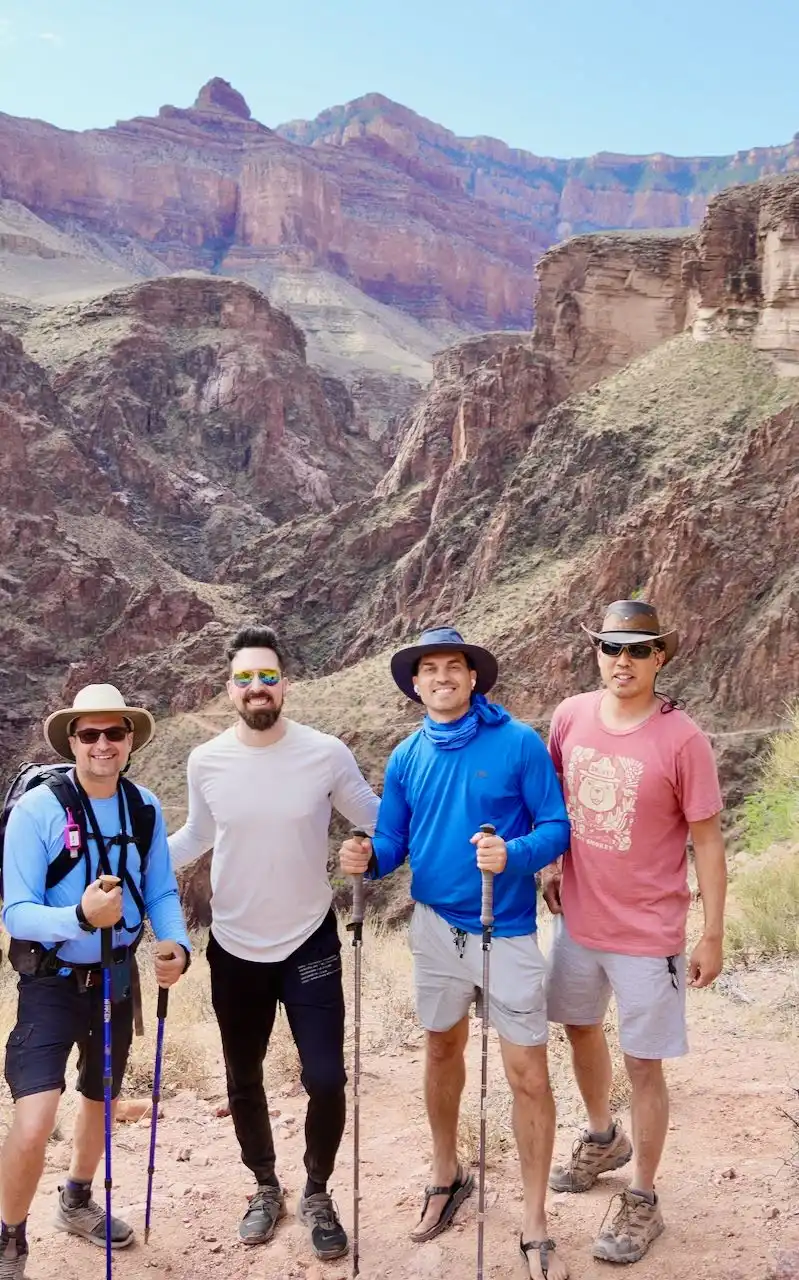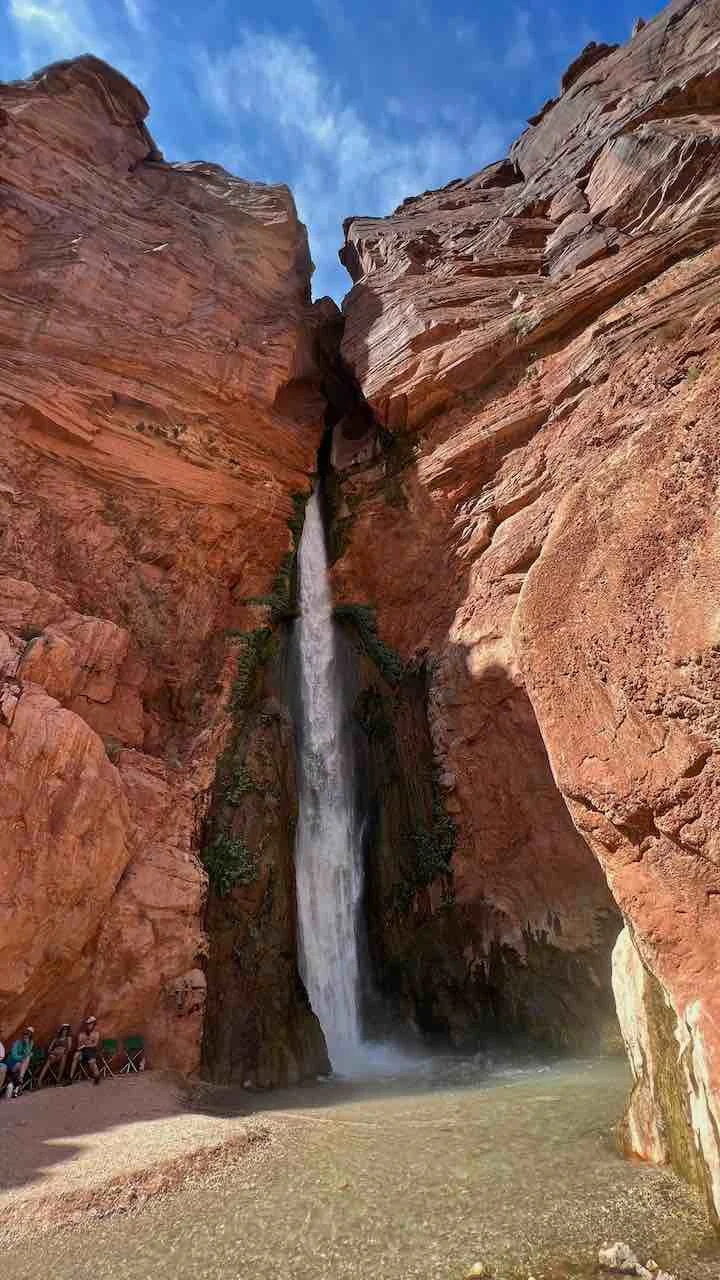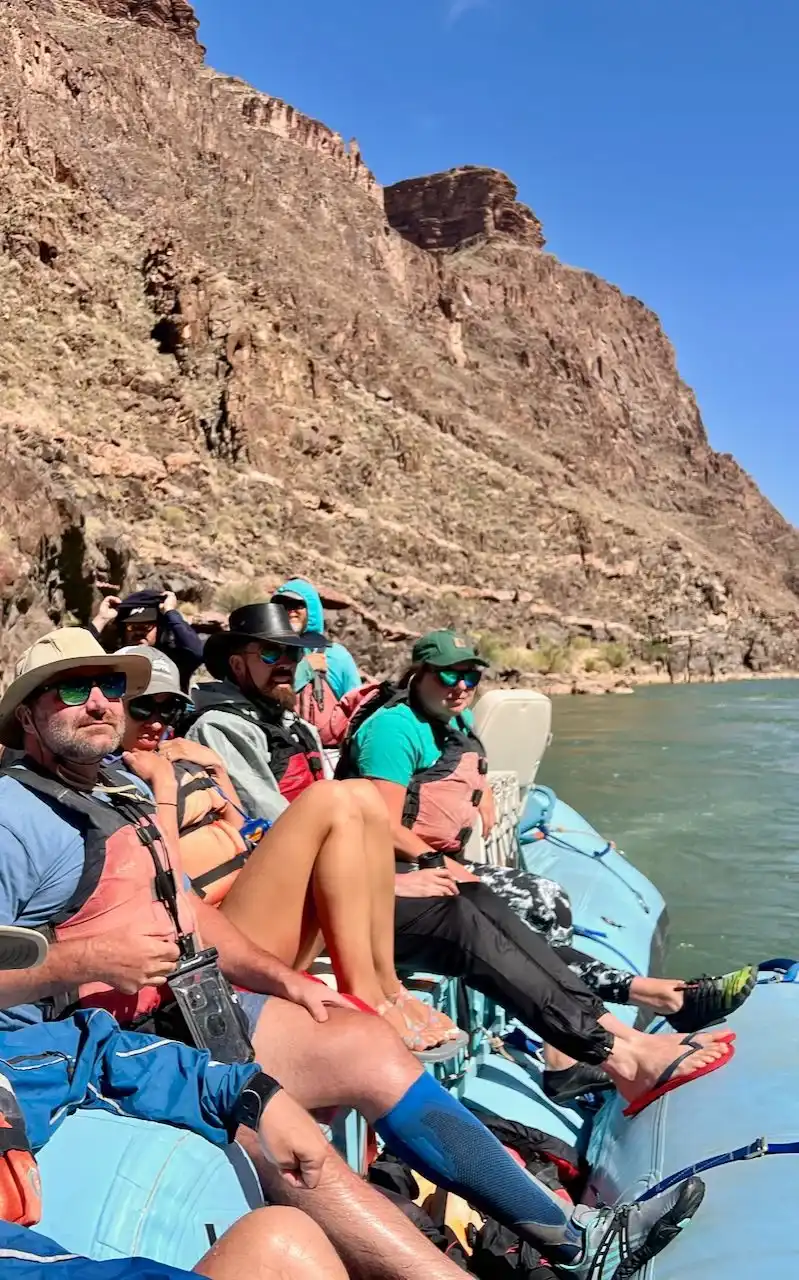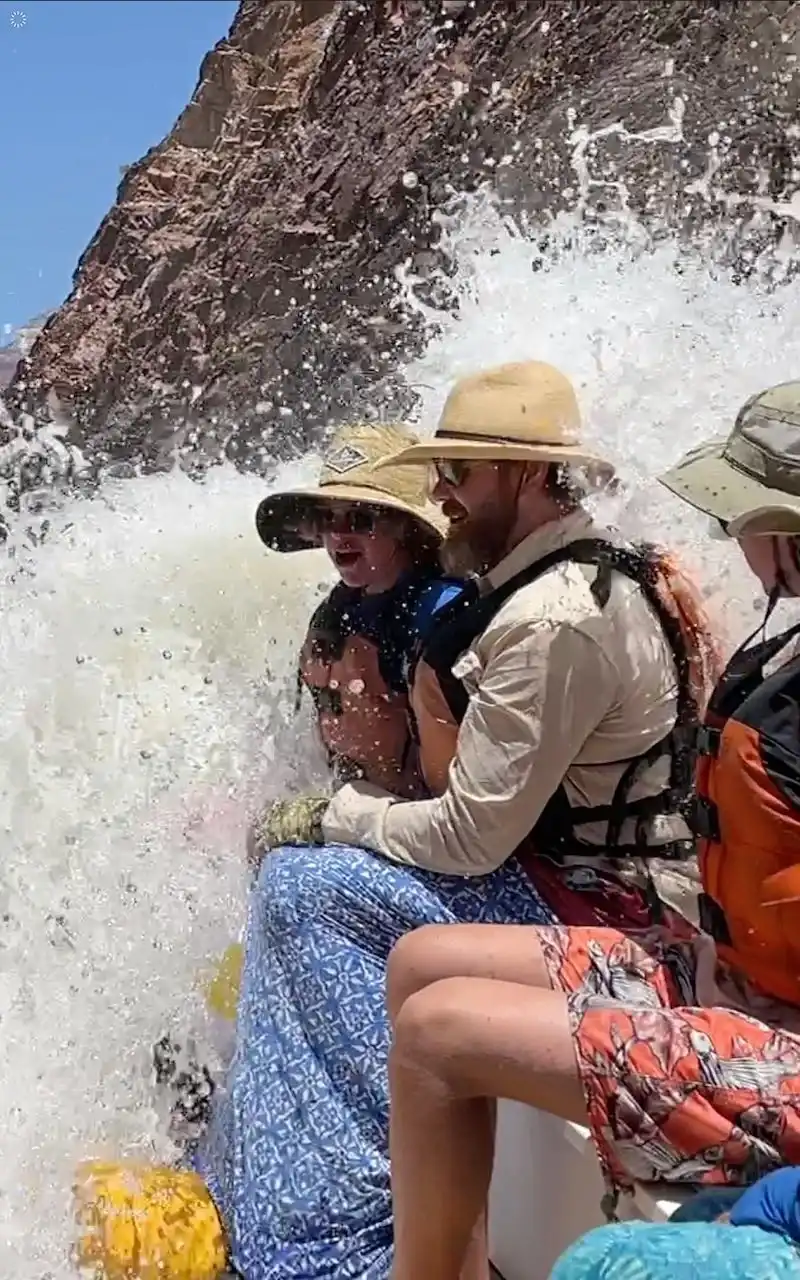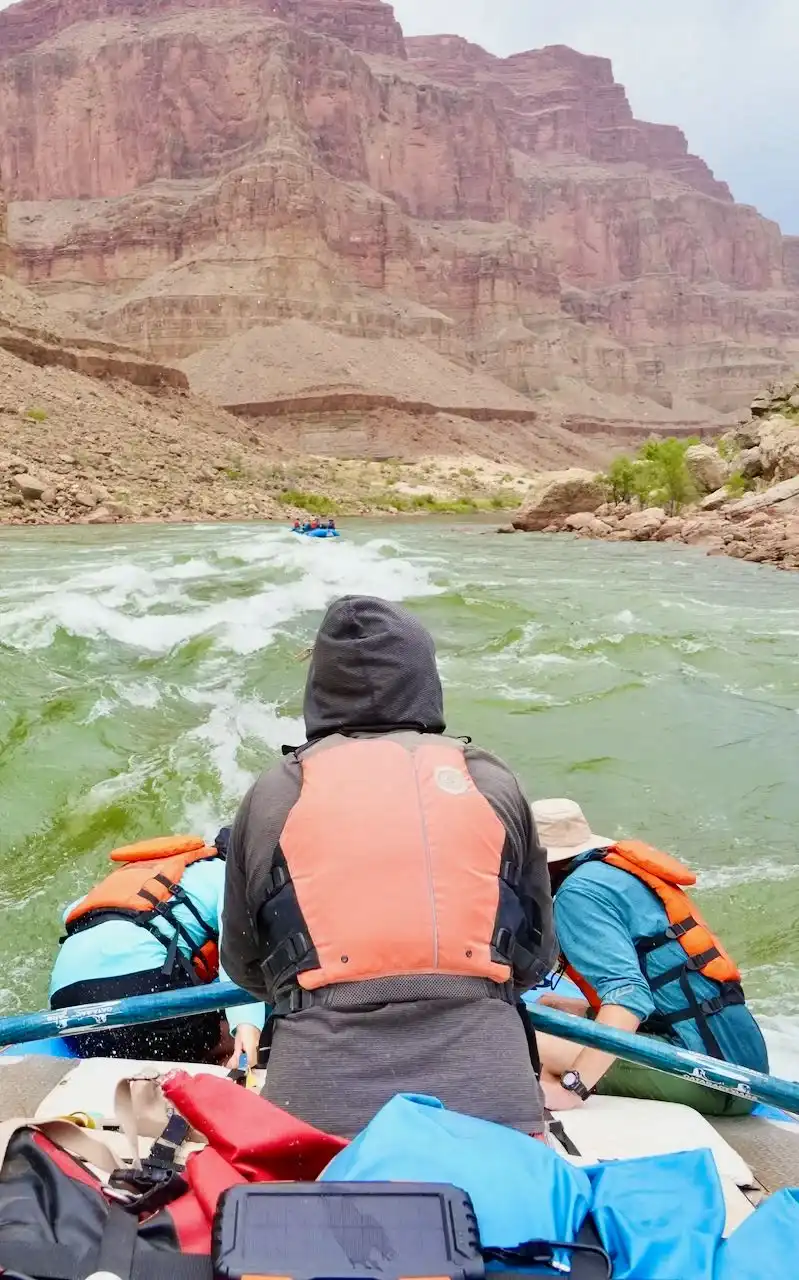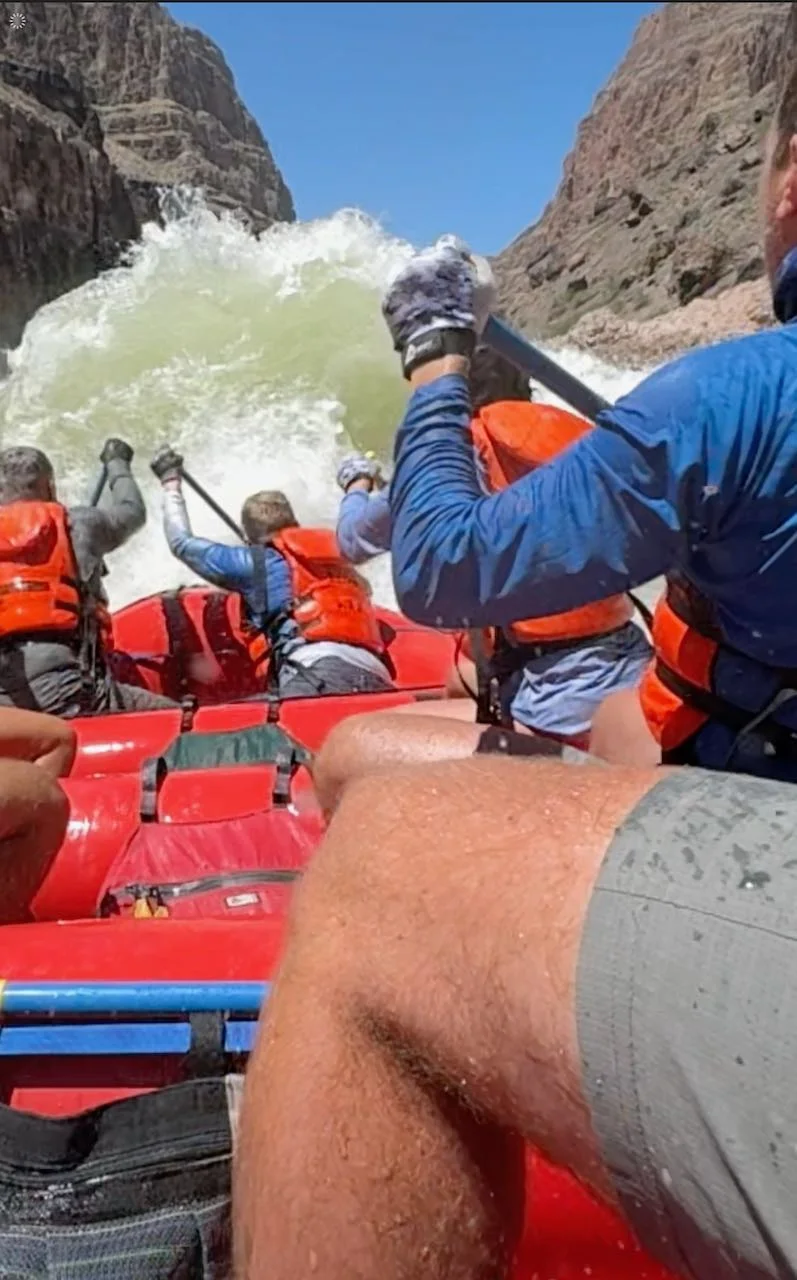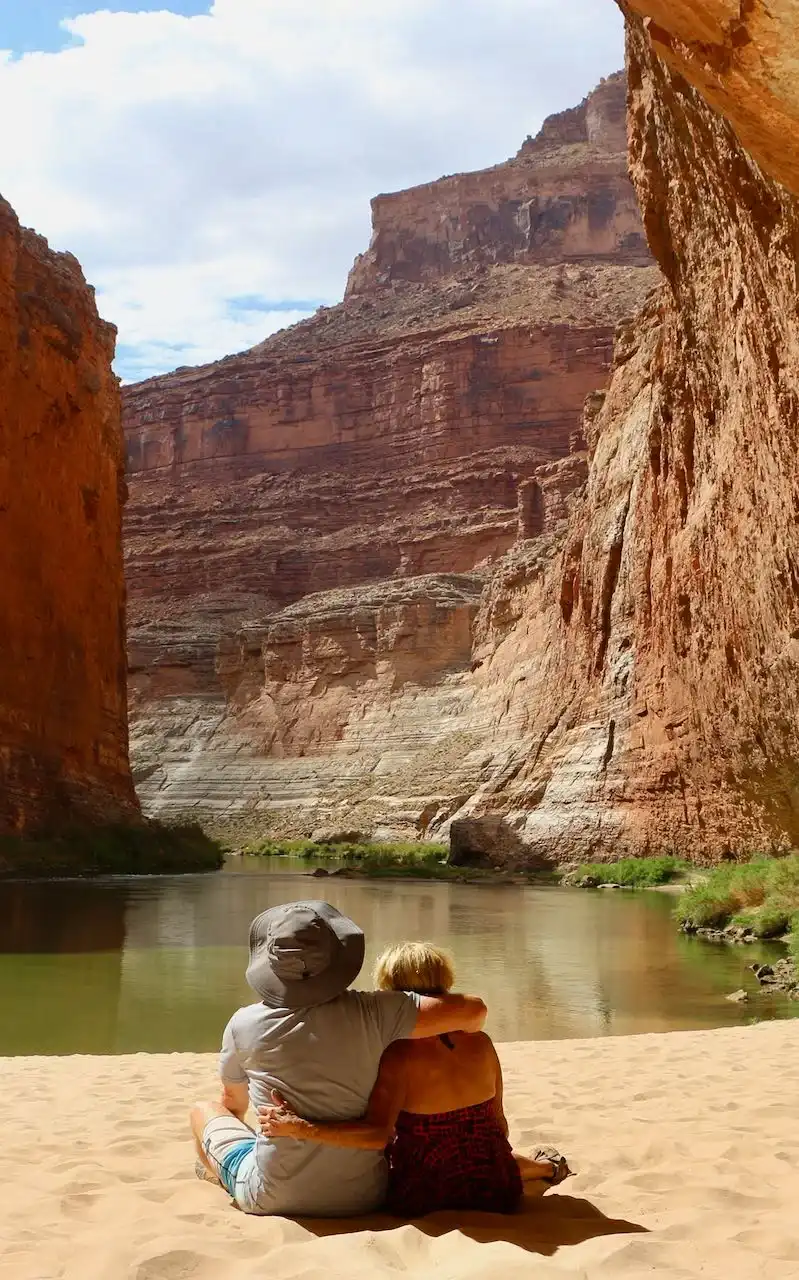Traveling in any undeveloped and primitive environment presents some degree
of risk. Situations can arise. All river trips carry gear to communicate
with the Grand Canyon National Park emergency service. The river guides have
advanced first aid and emergency medical training. In the rare case of an
emergency, guests are evacuated by helicopter.
Common mistakes people make include wearing new shoes that have not been
broken-in. They can cause sores and blisters. Not protecting your skin from
sunburn causes discomfort for days ahead. Do not overpack—plan on
washing clothes at lunch or camp. The heat and low humidity will dry items
in minutes.
Do not underestimate how quickly you can dehydrate. Drink plenty of water,
preferably with electrolytes. The Canyon's dry environment makes it
seems you are not sweating. As you sweat, it quickly evaporates, giving the
sensation of not sweating. Do not wait to drink water until you are thirsty.
By that time, it is too late.
Whether you are on a motor or non-motor raft, the river trips are active.
Elective side canyon hikes take place every day. On these hikes, you cross
streams and step on large rocks. It is recommended to get some exercise
before river trips.
Prevent blisters by breaking-in new river sandals by walking around in them
for a handful of times. Take walks around your neighborhood or perhaps use a
stair master or elliptical machine for a couple of weeks before the trip. If
you plan a partial canyon trip that requires hiking 7.5 to 9.5 miles in and
out of the Canyon, a more taxing workout program for at least two months in
advance of the trip is recommended.
There are four types of non-motor raft trips. They are Dory, Oar, All-Paddle,
and Hybrid, which is also called Classic Adventure where you can take turns
in a paddle raft among passengers but not have to paddle 100% of the time.
The only option that does require fit passengers to paddle 100 percent of
the time are paddle raft trips. They are recommended for rafters with
previous multi-day raft experience.
It is a matter of conditioning rather than skill. Guides will lead and direct
the team. Muscle fatigue and soreness can quickly set in if the paddler is
not prepared or used to paddling. Oar rafts and Dory boats are powered by
the guide, who may, from time to time, let guests take the oars. Hybrid
trips are paddle raft and oar raft combinations that are used to rotate
among the guests. It is a great way to experience paddling the Colorado
River without committing to 100 percent paddling as on an All-Paddle trip.
Fitness level and previous ailments and injuries determine which hikes are
the easiest. Upper Canyon trips that include hiking in and out require
greater stamina and endurance. They are more demanding on the lungs and
heart. The Upper Canyon rout is easier on the joints but requires muscular
strength.
An advantage is being acclimated to the Canyon's dry environment while
rafting. As you ascend out of the Canyon, you also hike out of the heat. At
the rim, the temperature is approximately 20 degrees cooler than the canyon
bottom. It is highly recommended to use trekking poles. They significantly
reduce the stress on lower leg muscles and joints by distributing the weight
to the upper body.


